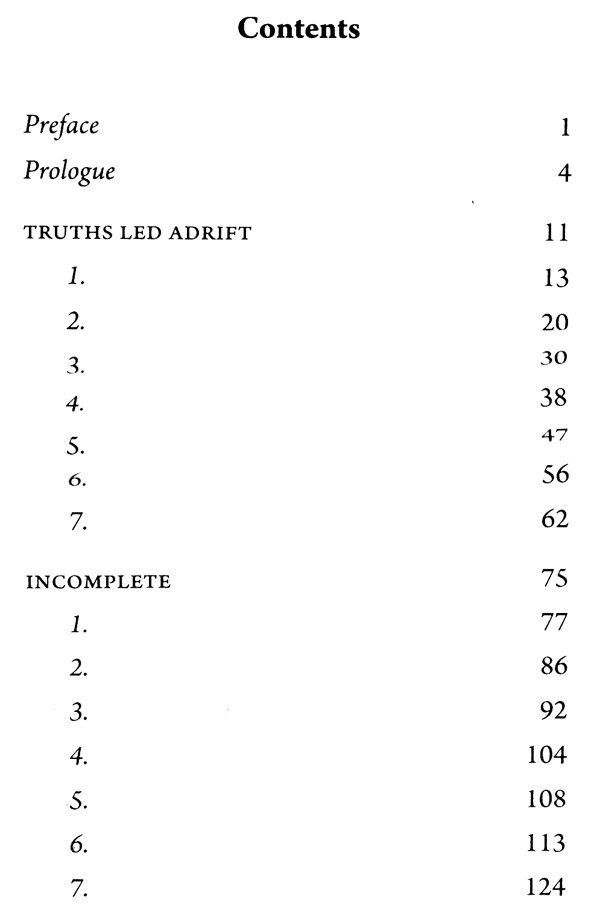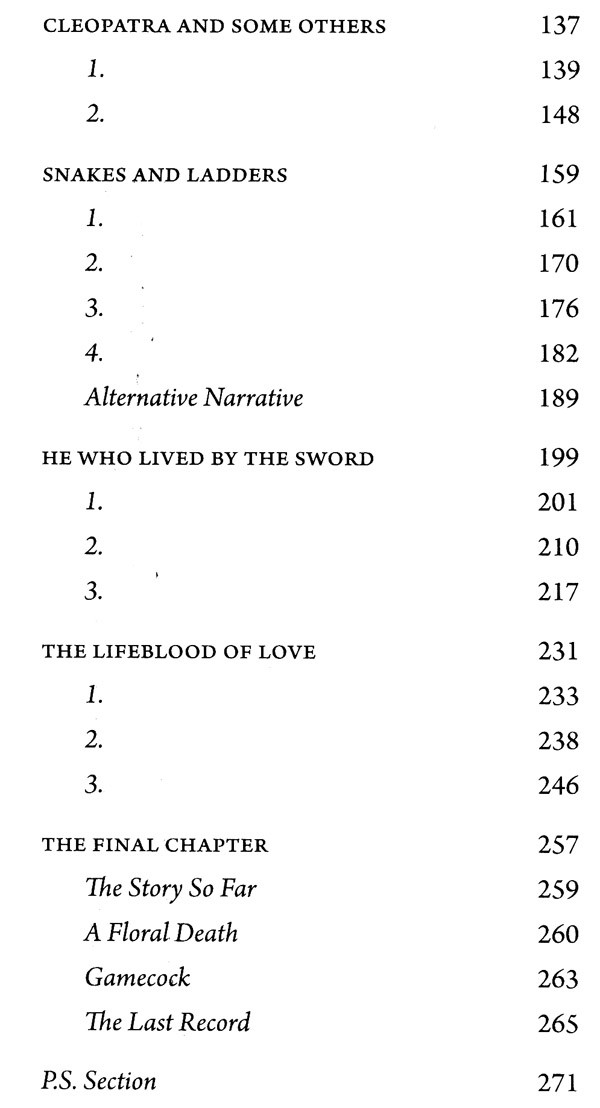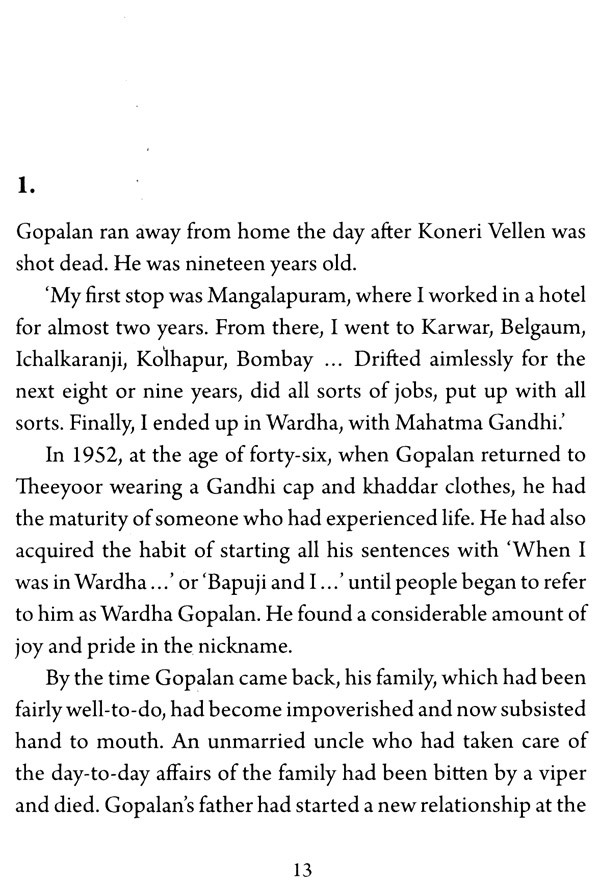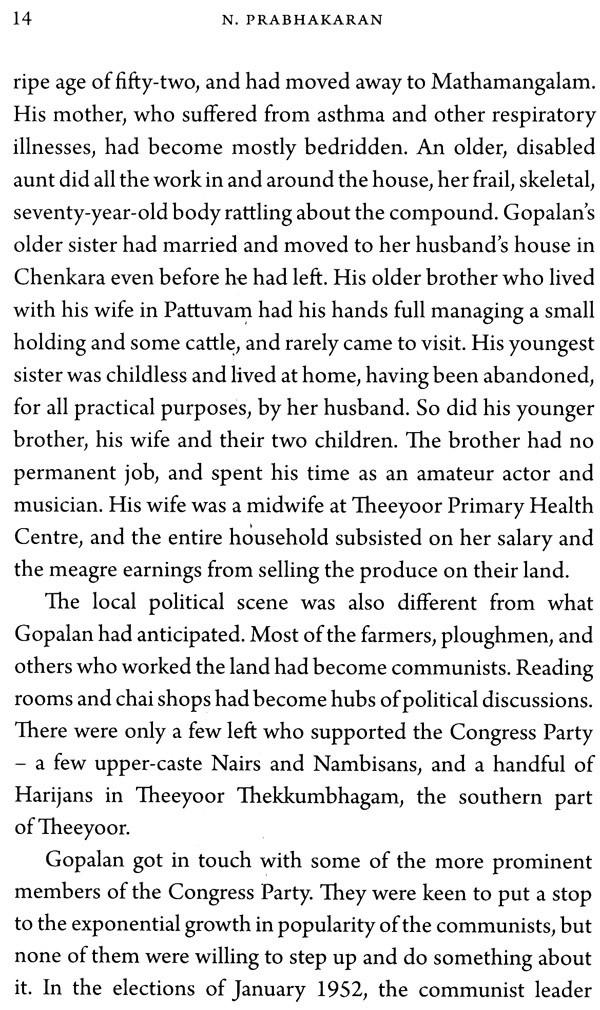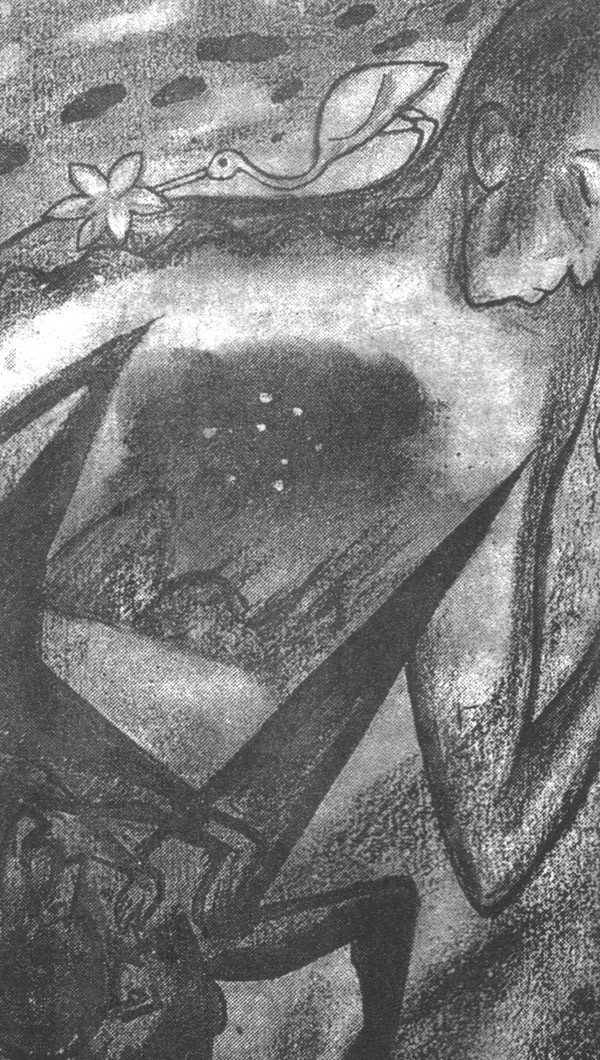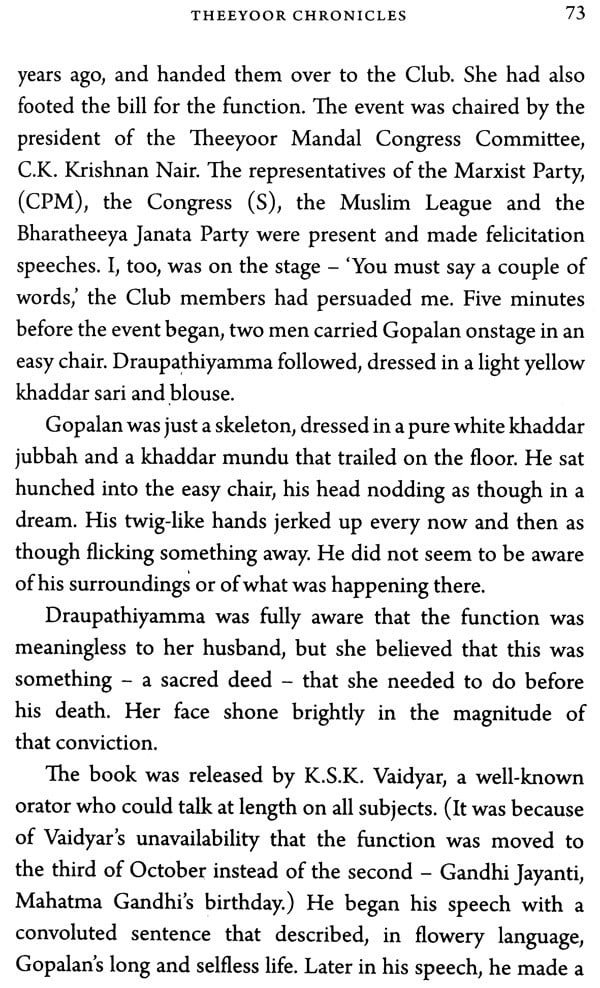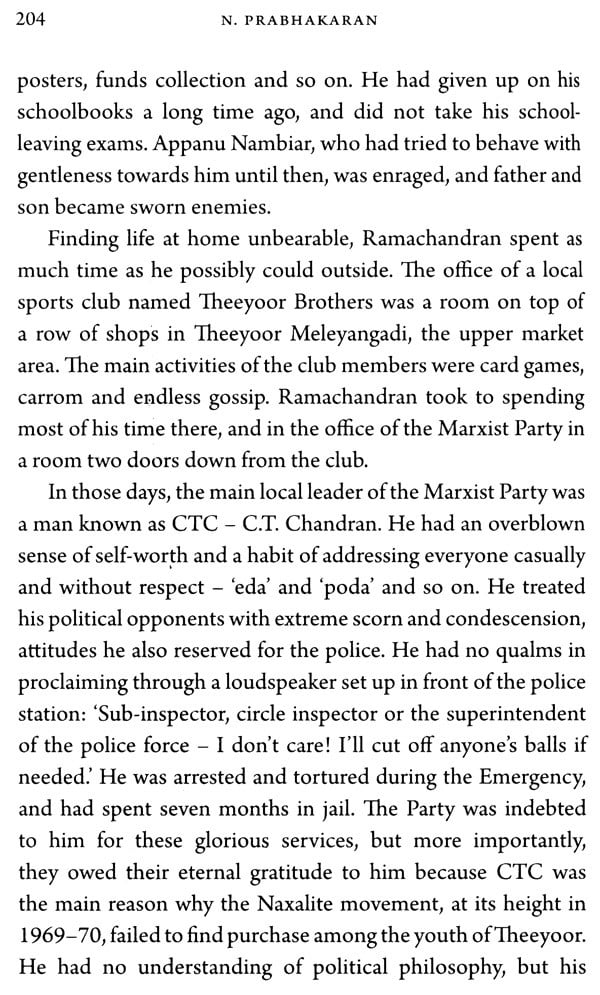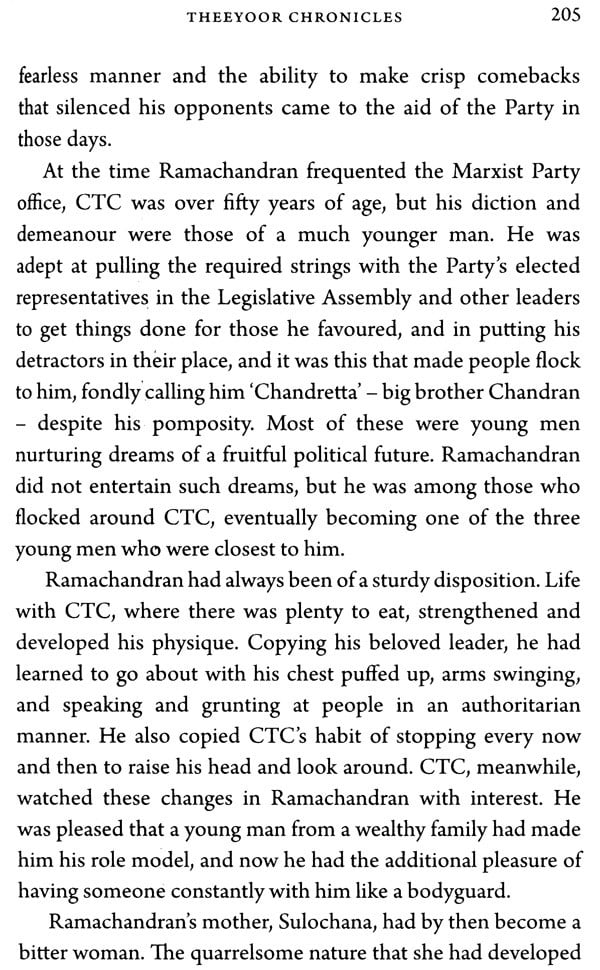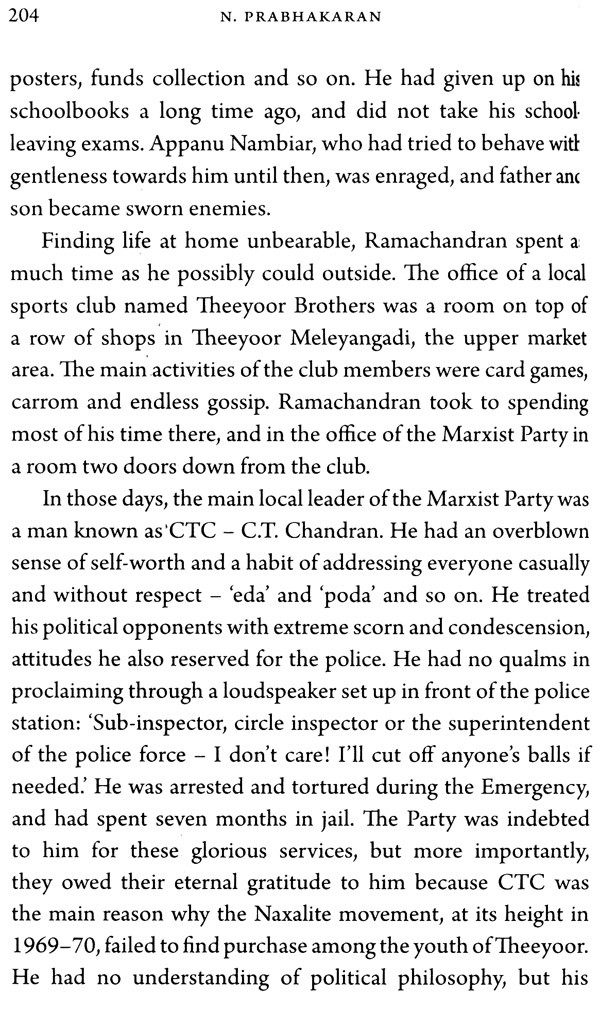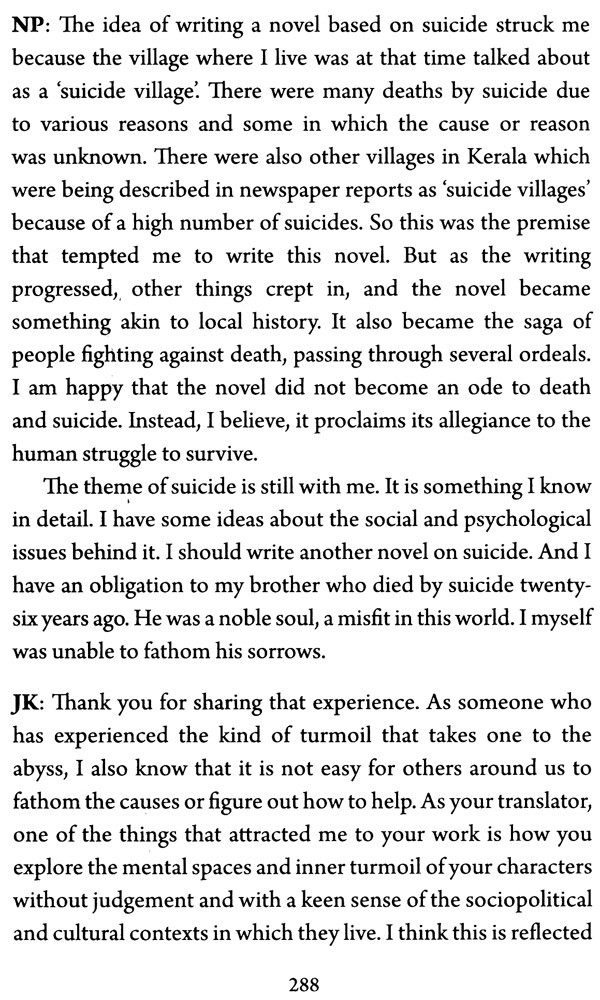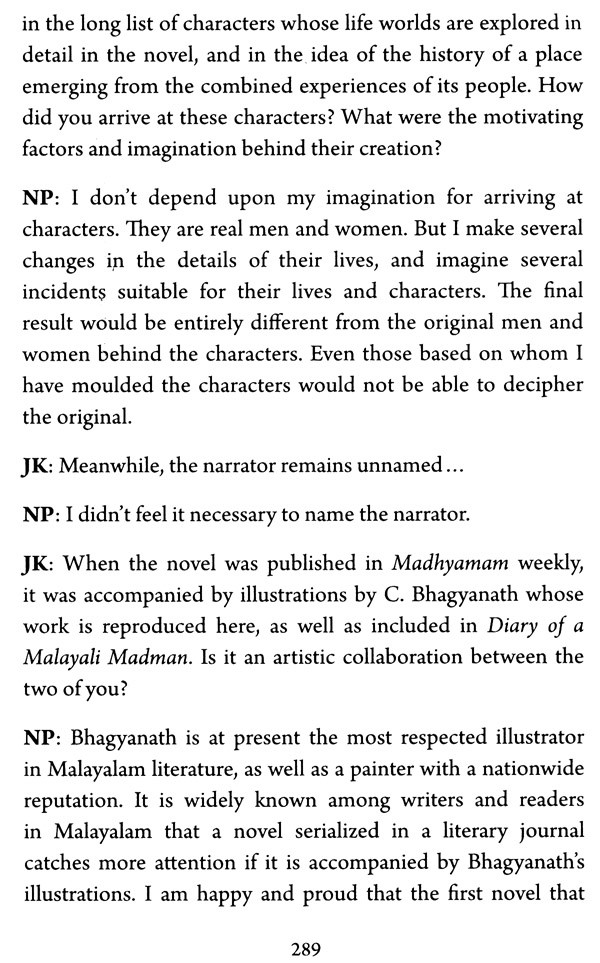
Theeyoor Chronicles- Translated From The Malayalam
Book Specification
| Item Code: | NCZ254 |
| Author: | N. Prabhakaran |
| Publisher: | Harper Collins Publishers |
| Language: | English |
| Edition: | 2021 |
| ISBN: | 9789354224348 |
| Pages: | 290 (Throughout B/w Illustrations) |
| Cover: | PAPERBACK |
| Other Details | 8.00 X 5.50 inches |
| Weight | 240 gm |
Book Description
In N. Prabhakaran's masterful hands - and in Jayasree Kalathil's brilliant translation - history, myth, facts, nature, political events, and the everyday concerns of ordinary people weave together into a story that is at once local and universal.
He has won numerous awards for his writing, including: the Kerala Sangeetha Nataka Akademi Award in 1987; the Kerala Sahitya Akademi Award in 1988 and 1996; the EMS Memorial Trust Award, Munnad, in 2005; the Vaikom Muhammed Basheer Memorial Trust Award in 2009; the Malayatoor Award in 2010; the Muttathu Varky Literary Award for his contribution to Malayalam literature in 2012; the 2019 Crossword Book Award; and the Odakkuzhal Award in 2020.
Theeyoor panchayat, which includes the villages of Theeyoor and Chenkara, covers an area of 40.14 square kilometers, and has a population of 29,901, more than half of which lives in Theeyoor. In the period between January and September 1997, fourteen people had killed themselves and four people had disappeared in Theeyoor alone.
Nine of the fourteen suicides were by hanging, three had consumed poison, and one had jumped into the river.
The remaining death was quite bizarre. He was a cockfight enthusiast and had somehow managed to get himself pecked to death by two of his gamecocks. Theeyoorians could not comprehend why so many people had taken their own lives in such a short period of time, nor could they understand how four people who lived amongst them could simply disappear.
All they had to fall back on was rumor and speculation.
In the five days that I was there, I made careful notes of everything I heard, everything I was told. By the afternoon of 8 October, I was back in my office, and on the eleventh, I submitted my article, 'A Village that Burns' - Theeyoor literally means 'the land of fire' - to my editor. Janavartha published it as a series over the next four days, but I had written it in one sitting, in one night. The series did not get much of a response in Theeyoor, but letters poured in from other villages and cities, and even from abroad.
The successes of a journalist are short-lived, and so it was with the fame 'A Village that Burns' brought me. Still, Theeyoor and its people, and those in whose pursuit I had gone there - the dead and the disappeared - would not leave my mind. They lingered on, made themselves a lively part of my day-to-day musings. Gradually, the need to write something more about the village became an almost constant ache, and when I could not ignore it any more, I began writing this book. The content of this book is based on a variety of sources: my own research while I was in 'Iheeyoor, material from the book The History of Theeyoor written by a Theeyoorian, Wardha Gopalan, and the information Sadanandan mash, a retired schoolteacher and a local agent of our newspaper, shared with me in person and in the letters he wrote me.
Book's Contents and Sample Pages
